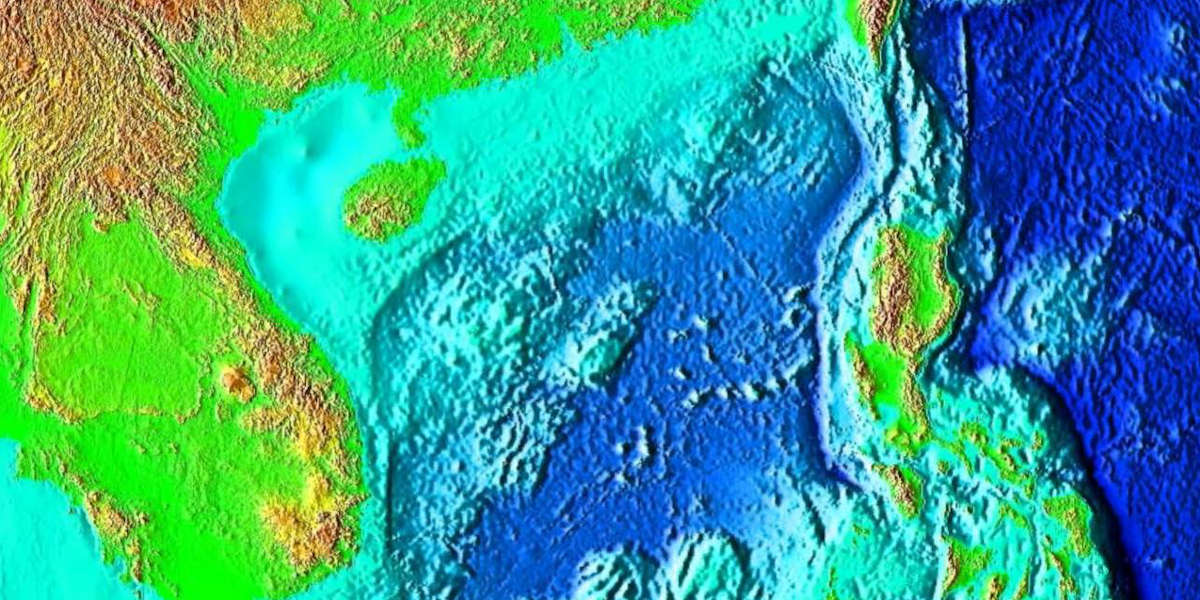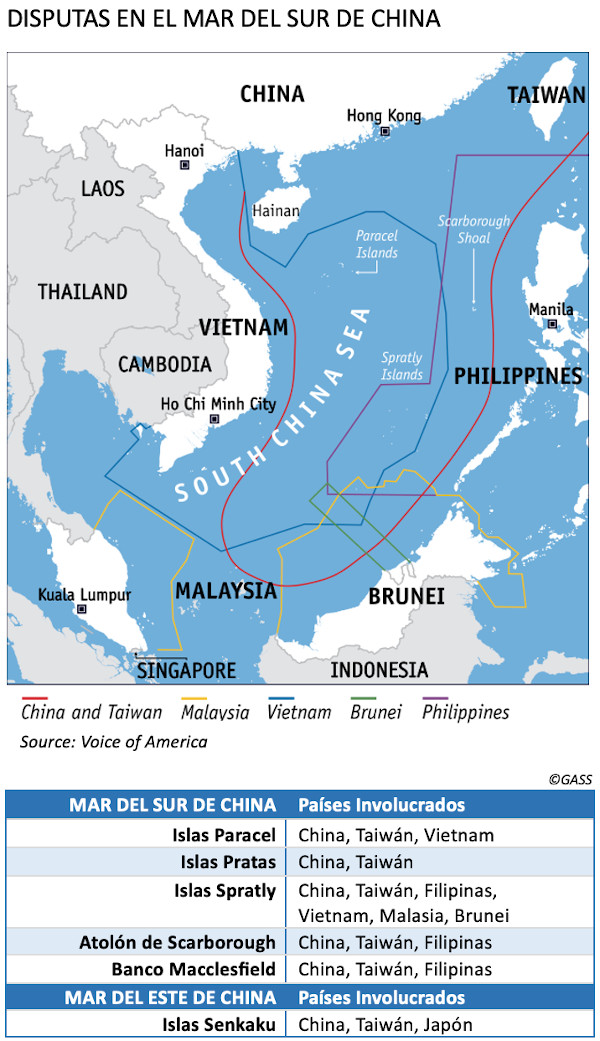China's gray zone and naval tactics
The gray zone, which characterizes Beijing's actions in the South China Sea, is a conceptual space that lies between peace and armed conflict. It materializes when one or more actors use different elements of power in a deliberate manner to pursue political or military objectives through activities of an ambiguous or difficult-to-attribute nature. These activities exceed the limit of what could be a mere competition between these actors, but fall short of armed conflict.
Activities in the gray zone are below the threshold that would justify a military response, and occur gradually over a period of time rather than involving immediate and direct action. The vast majority of them are posed in such a way that it is highly complicated to identify their perpetrator, although in the case of the South China Sea this does not apply.
In this region, a wide variety of legal and political justifications, as well as, above all, historical arguments, are employed for the acts committed. In addition, China also relies on the threat of escalation as a coercive instrument, so that the states concerned are compromised if they attempt to stand up to Beijing's assertiveness.
Following is a fictional meeting illustrated by retired Admiral James Stavridis, which perfectly describes the reality of today's status in the region:
One summer evening in the sweltering South China Sea, a 2,000-ton coastal steamer approaches a fleet of Vietnamese fishing vessels that are fishing within Vietnam's exclusive economic zone, about 150 miles offshore. The steamer loiters in the area for an hour or two as night falls.
Suddenly, three speedboats, each armed with 50-caliber guns and hand-held rocket launchers, appear on the side of the ship. For the next hour, the speedboats attack dozens of fishing boats, firing with their cannons, lobbing grenades and attacking survivors floating in the water. The fishing vessels that manage to get away flee for their shore, frantically sending out radio distress signals, which are intercepted and overridden by small drones flying overhead [...].
In the aftermath, China insists that its armed forces were not involved and says it suspects a group of extortion gangsters, pirates or Vietnamese terrorists.
With this story, which is not far from what could one day happen to Vietnamese and Philippine fishing vessels in the region, the admiral highlights two fundamental characteristics of hybrid warfare: the use of force always below the threshold of armed conflict (these are not actions typical of a conventional war such as those we are seeing in the Black Sea), and the difficulty of attributing the actions to a specific actor due to the absence of identification on their vessels and uniforms (which allows the perpetrator to evade responsibility for their actions).
Regarding the first characteristic, China resorts to a range of hybrid tactics to harass its neighbors and claim de facto control over the aforementioned regions, most of which are non-conventional:
'Laser Dazzling'. Lasers are non-lethal weapons used by the Chinese Coast Guard to cause momentary blindness to sailors from neighboring countries, as well as cause problems with their ships' sensors. They are mostly used to harass Philippine vessels in contested areas, such as Scarborough Atoll or the Ayungin sandbar (known as Second Thomas Shoal).
Blockades. One of the most commonly repeated actions against Philippine vessels are blockades, which consist of making crosses in front of the bow of the vessel to obstruct the conduct of their patrols or to reach their destination. Their use is especially common against Philippine resupply missions to the Ayungin Bank, having repeatedly prevented them from being carried out normally.
'Going Dark', translated as 'goingdark'. Chinese vessels resort to this tactic to make it uncertain where they are operating or where they are headed. They do this by turning off their automatic information system (AIS) transponder, a signaling tool that identifies the vessel's subject , its position, speed and other navigational safety indicators. Although its use is mandatory under agreement with the International Maritime Organization (IMO), Chinese vessels operating in the region often turn it off to conceal their maneuvers against Philippine vessels. In addition to the South China Sea, this tactic is often employed by Russian vessels as well, and has also been seen on several occasions with incidents in the Red Sea.
Swarming. Another characteristic feature of China's actions in the region is the employment of its maritime militia (mostly composed of fishing vessels) to pursue its strategic objectives. Despite their appearance as simple civilian vessels, they are often also equipped with weaponry to intimidate larger vessels of other coast guards. Under the official name of the People's Army Maritime Militia (PAFMM), and known more colloquially as the 'little blue soldiers', they allow China to harass other vessels where China claims sovereignty.
Water Cannons. As the name implies, China has on numerous occasions resorted to firing high-pressure water cannons at fishing vessels and coast guards of the Philippines and other neighbors. As with all other tactics, Beijing seeks to deter these vessels from carrying out their usual duties, so that they will leave the disputed regions and China can slowly reclaim its sovereignty.
These and other tactics can be consulted on the Sea Light page, an initiative of several maritime security specialists in the region that seeks precisely to 'shine a light' on China's activities in the gray zone.
The weight of the Indo-Pacific
At final, although the current conflicts in Ukraine and Gaza are almost entirely in the media spotlight, we must not forget the seriousness of the status in the Western Pacific.
Over the coming years, China will continue to strengthen its maritime posture and cement its status as the world's largest navy. At the same time, in response, neighboring countries have for years been focusing their efforts on strengthening their own naval capabilities to cope with China's expansionism. Japan and South Korea are, after China, the two countries with the largest shipbuilding capacity today, and their efforts have resulted in a rate of growth of their navies not seen since the time of World War II. Both factors make the status one of the most geo-strategically dangerous, due to the importance of these waters for global maritime trade.
In addition to Japan, China and South Korea, smaller countries such as the Philippines and Vietnam are also seeking to increase their capabilities to cope with China's harassment, whose range of hybrid naval tactics could lead to a dangerous escalation of tensions in the coming years. It is therefore advisable to follow developments in the region closely, being aware, as we mentioned above, that a conflict in the region would have more serious consequences than those of the conflict in Ukraine or Gaza.



